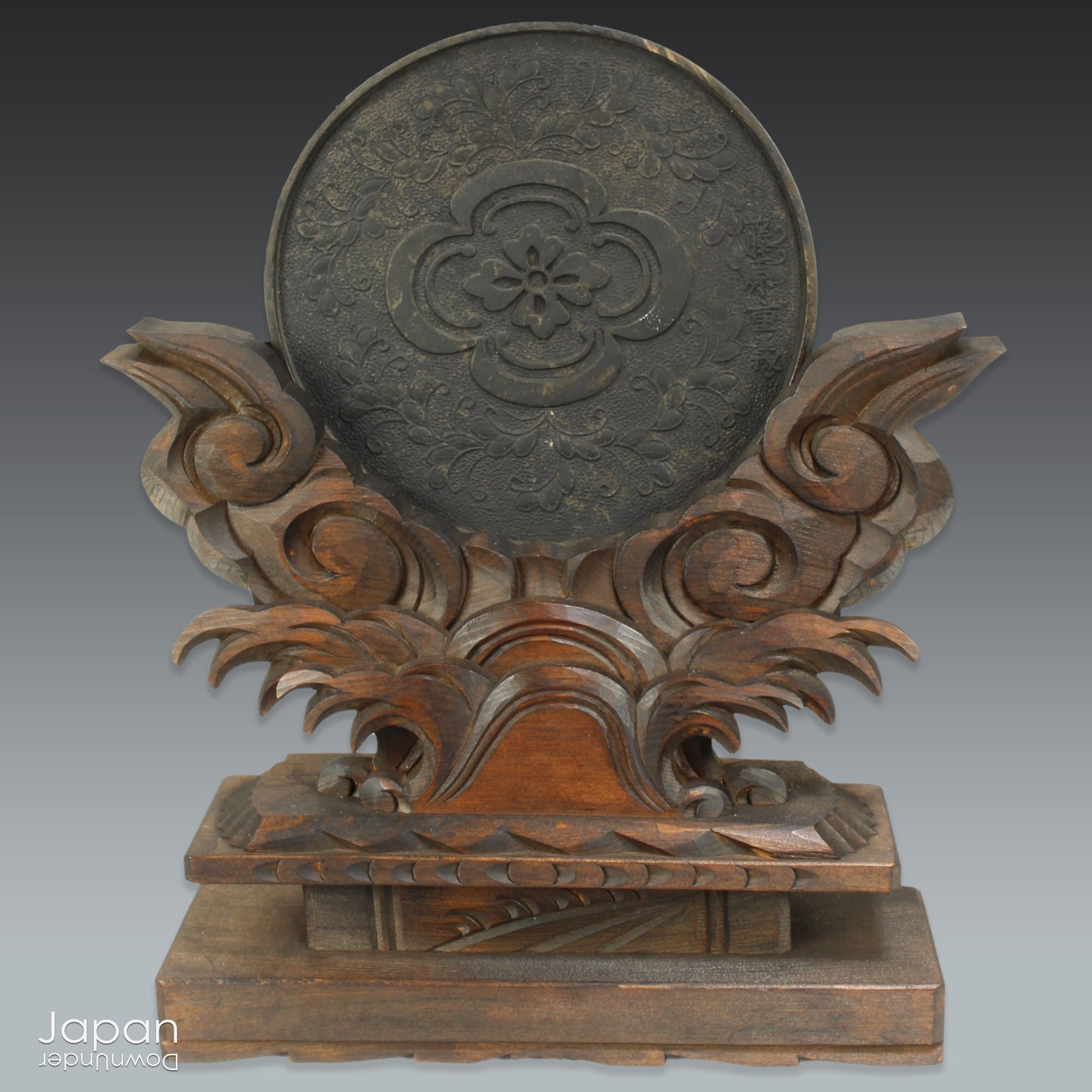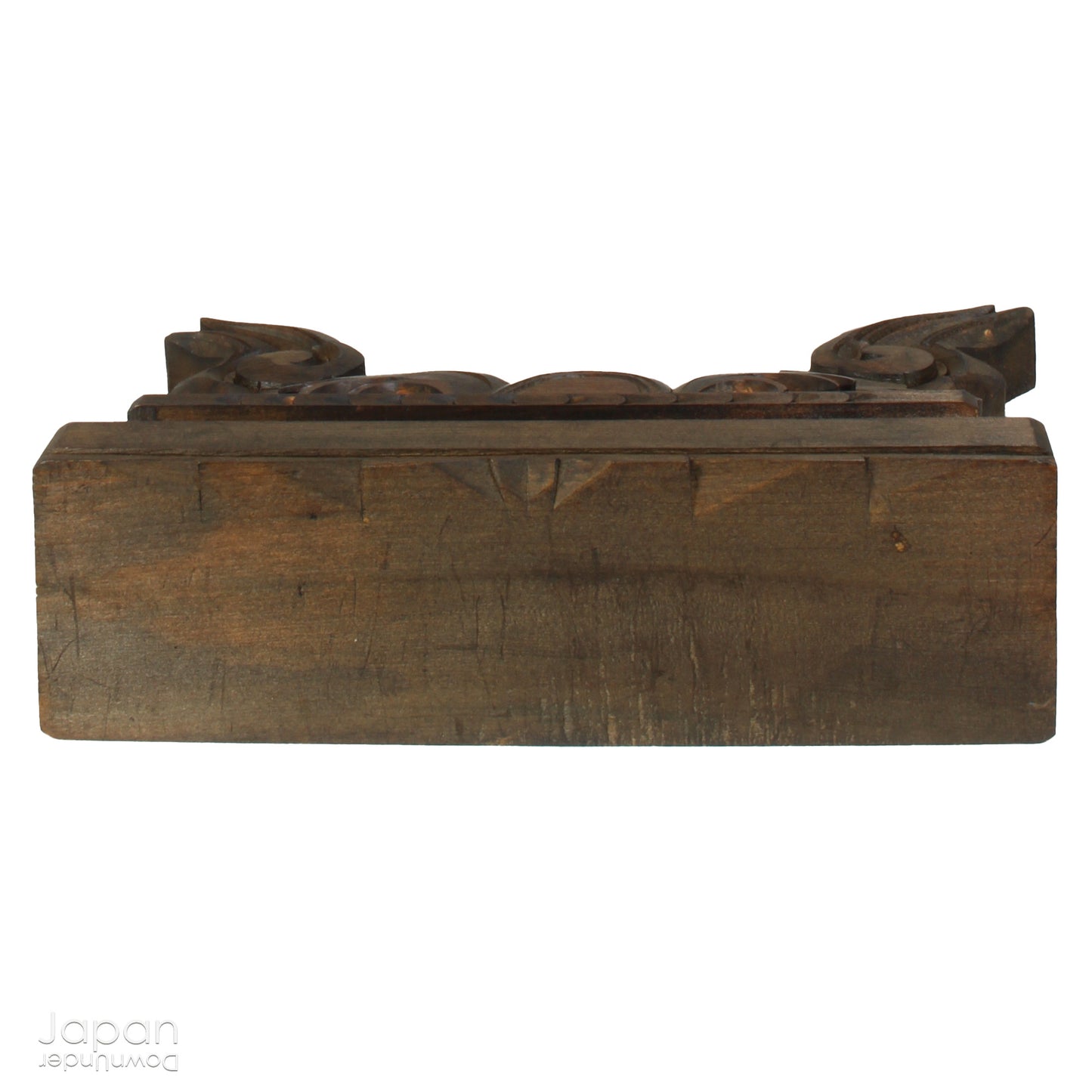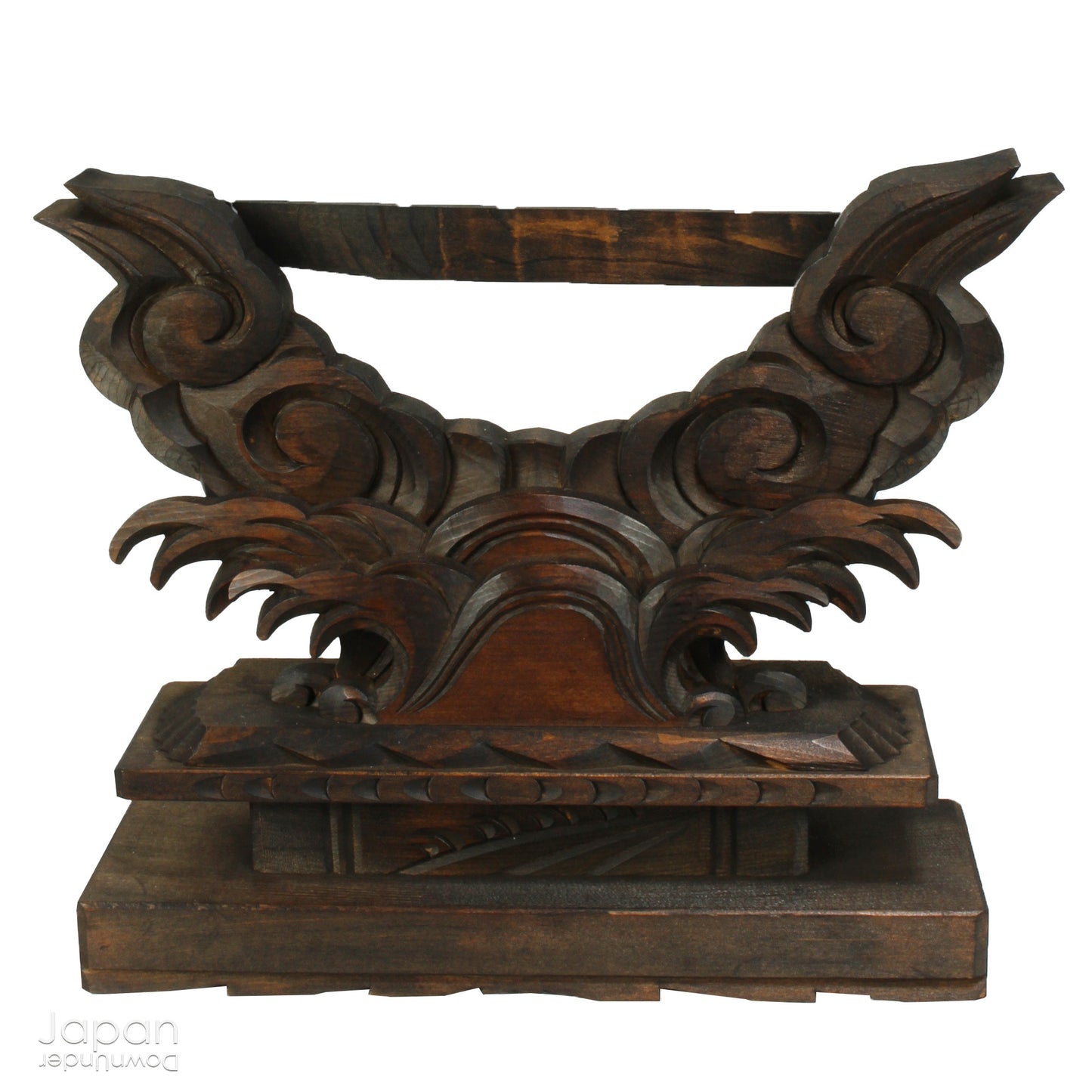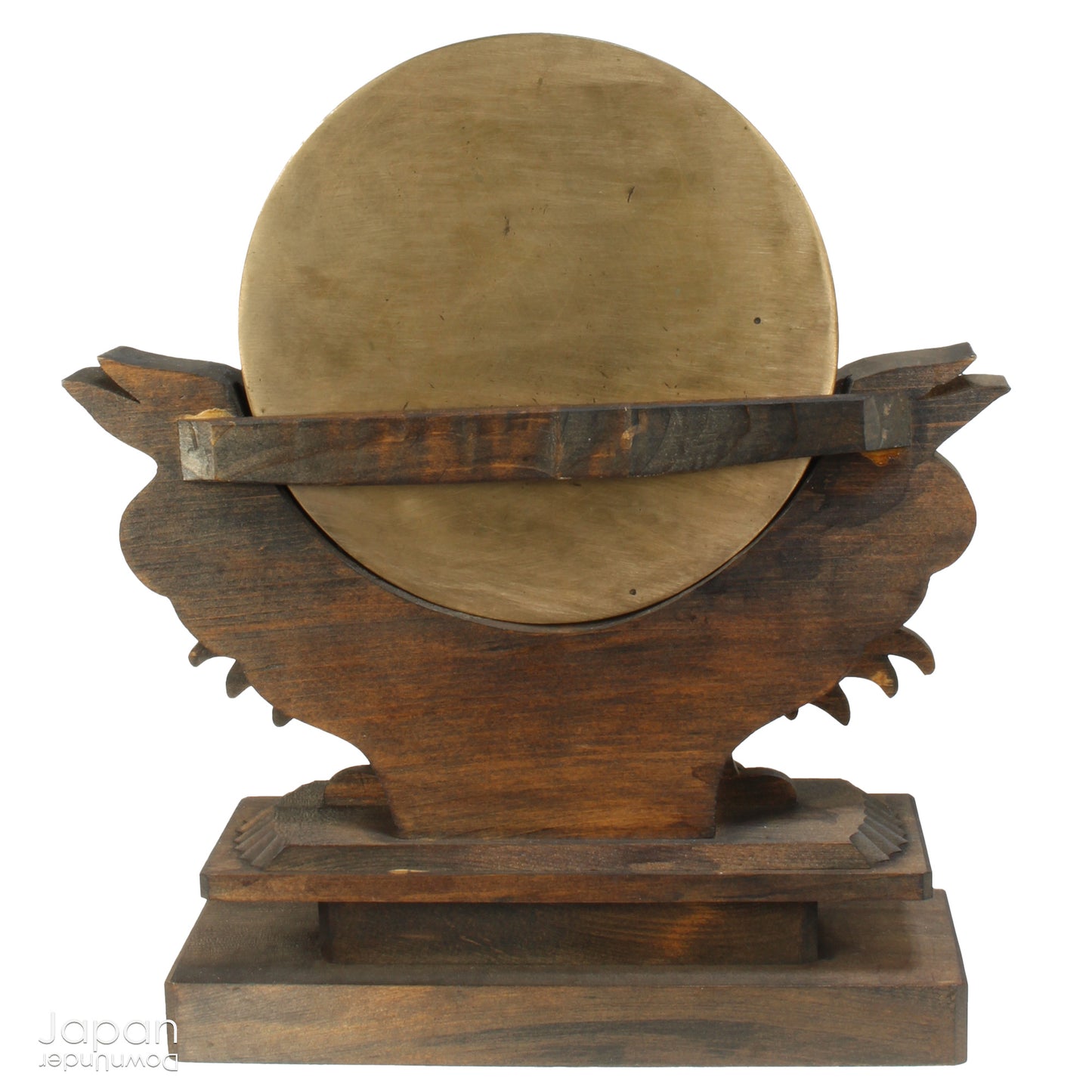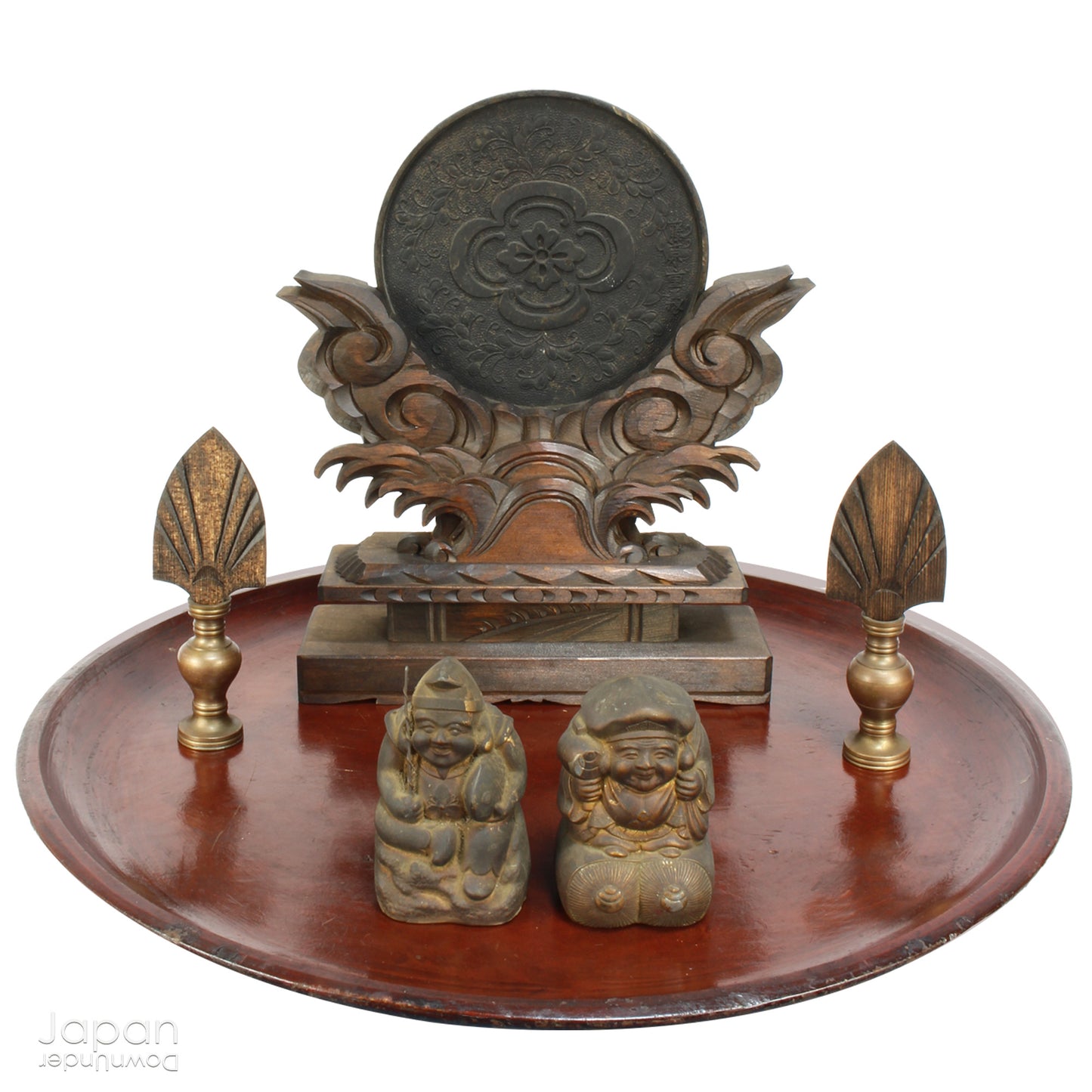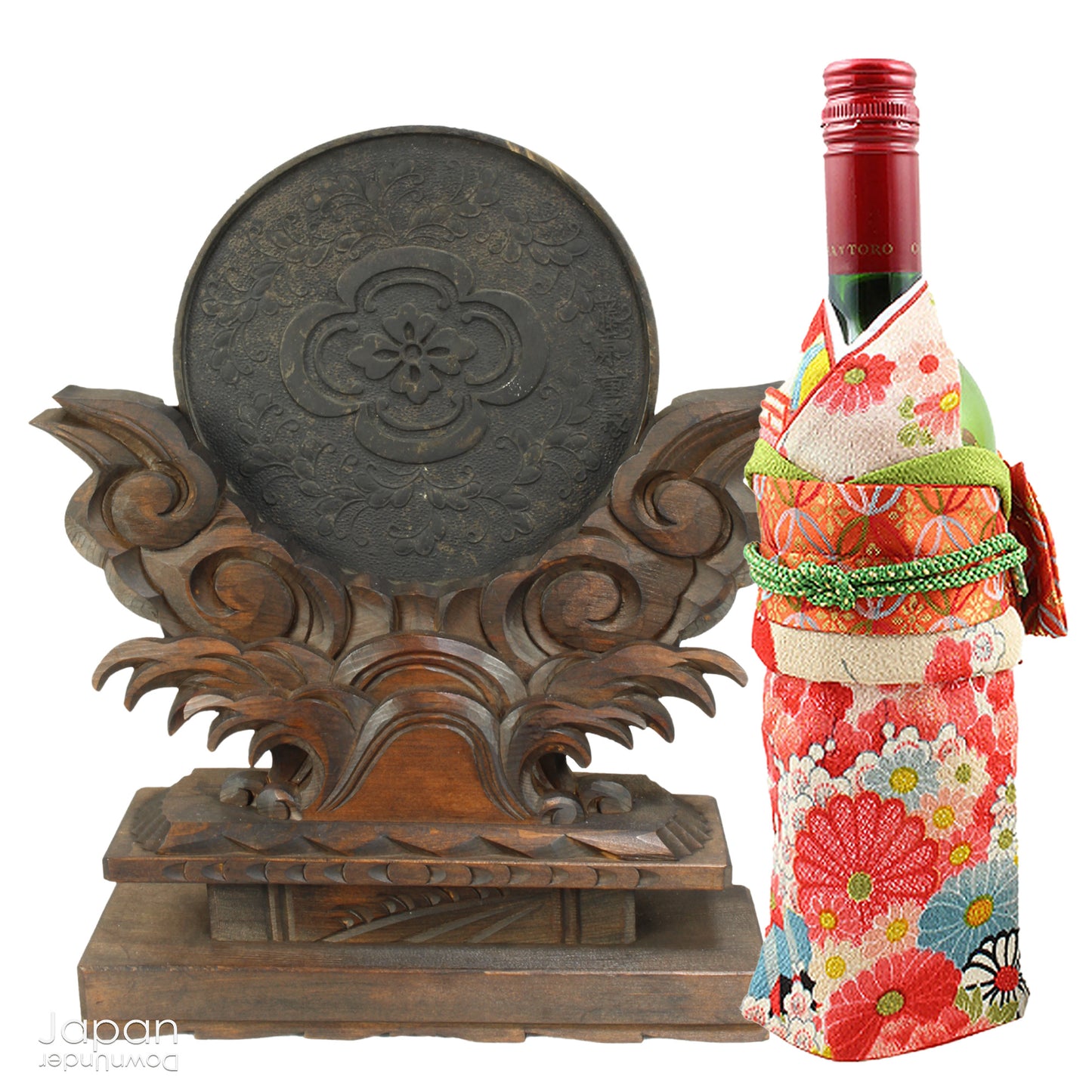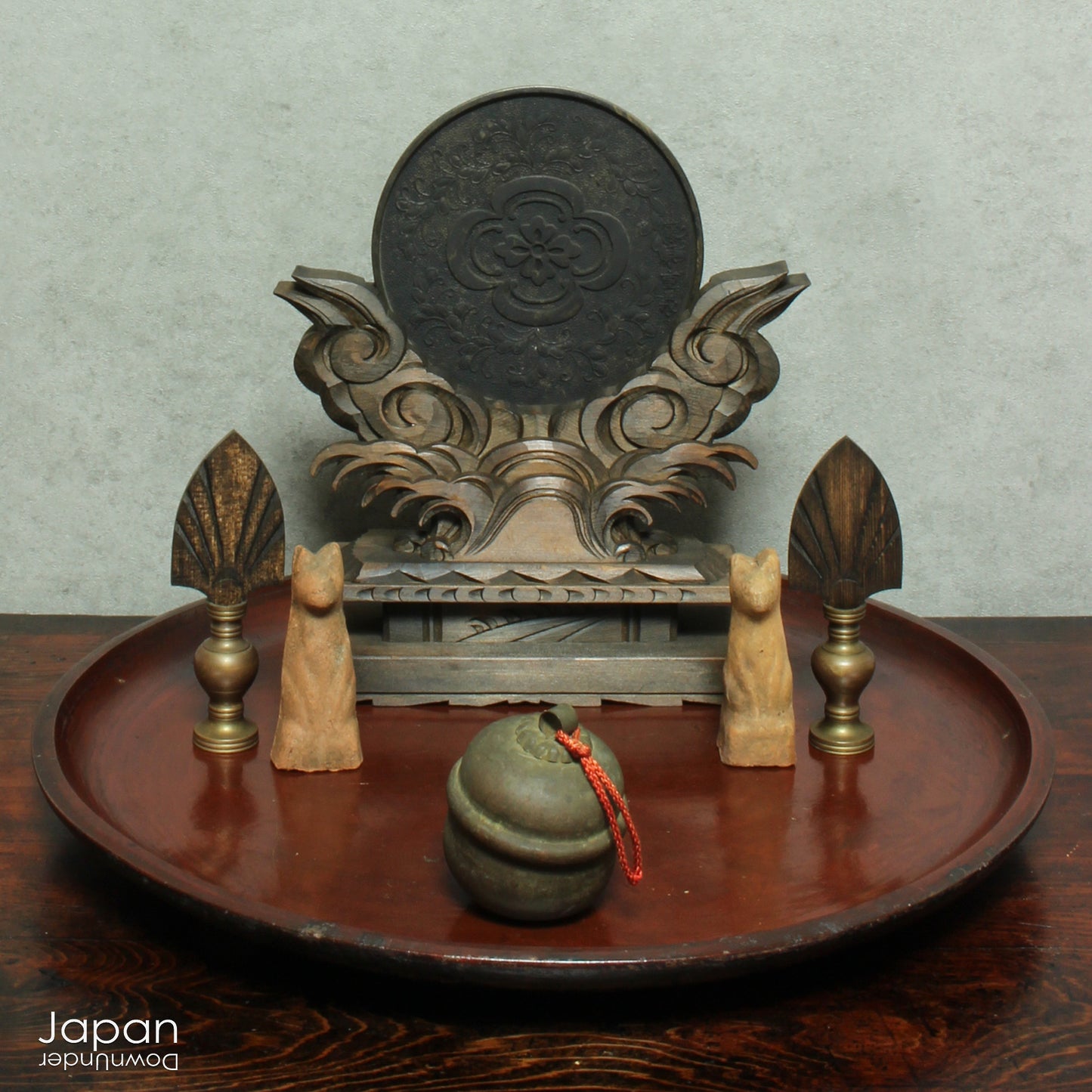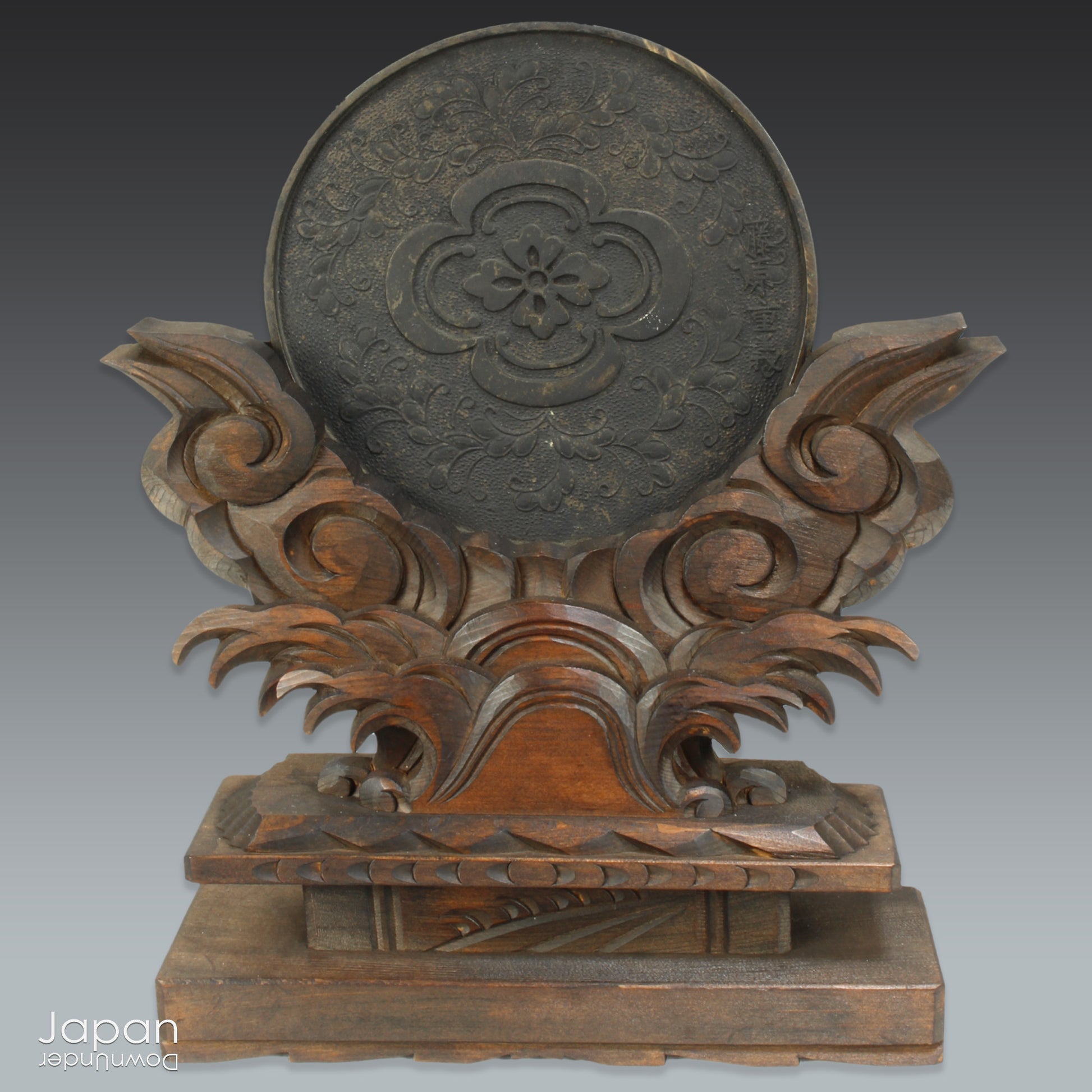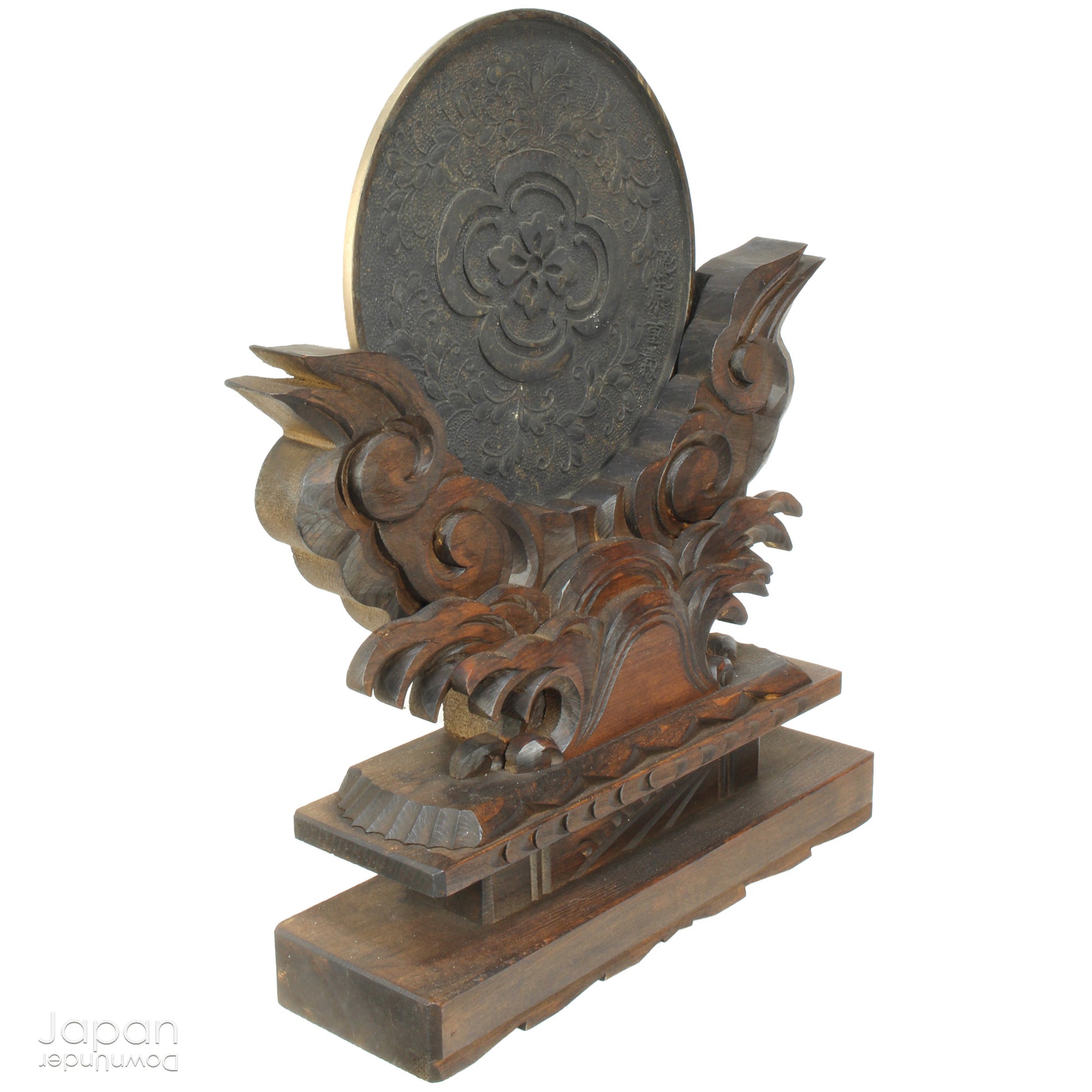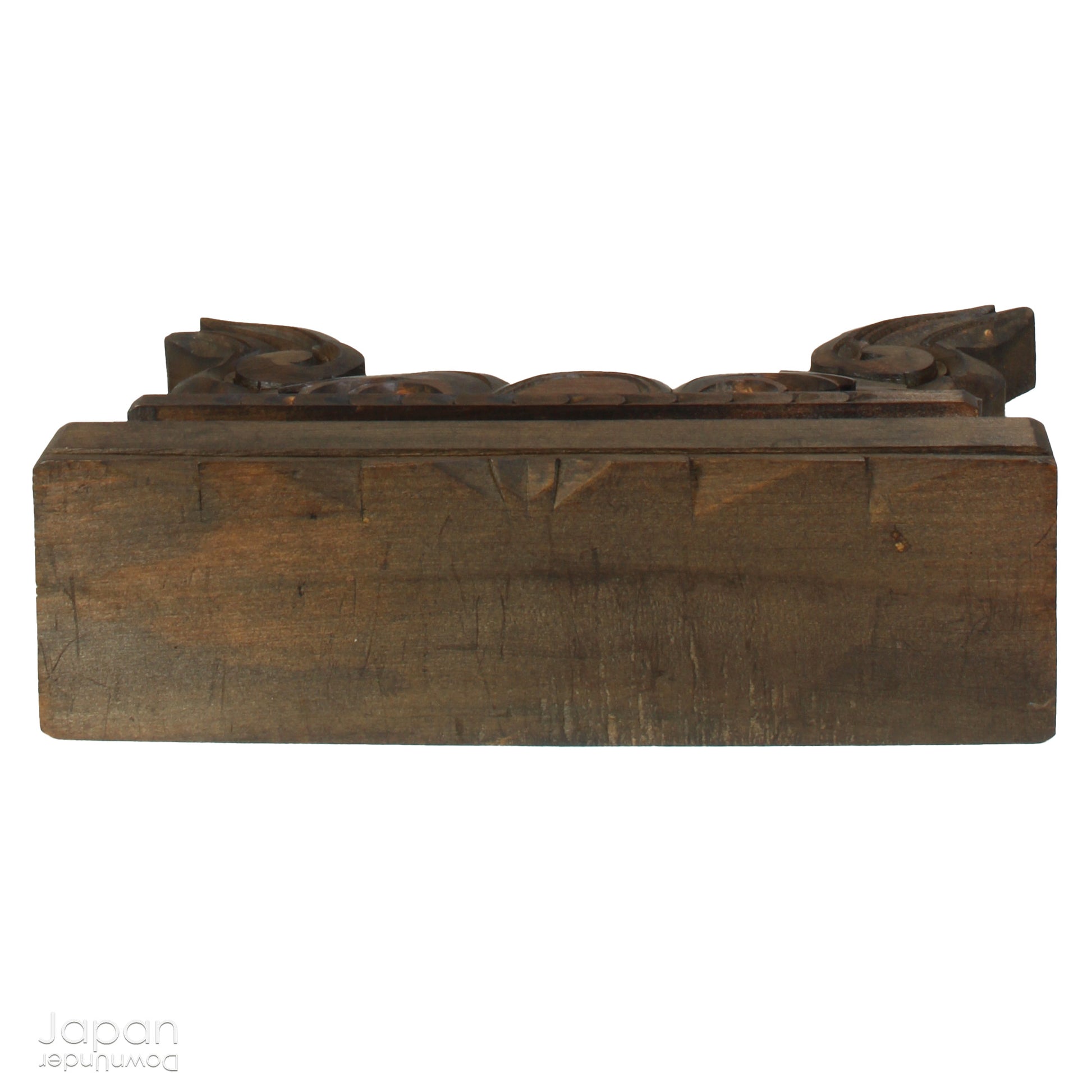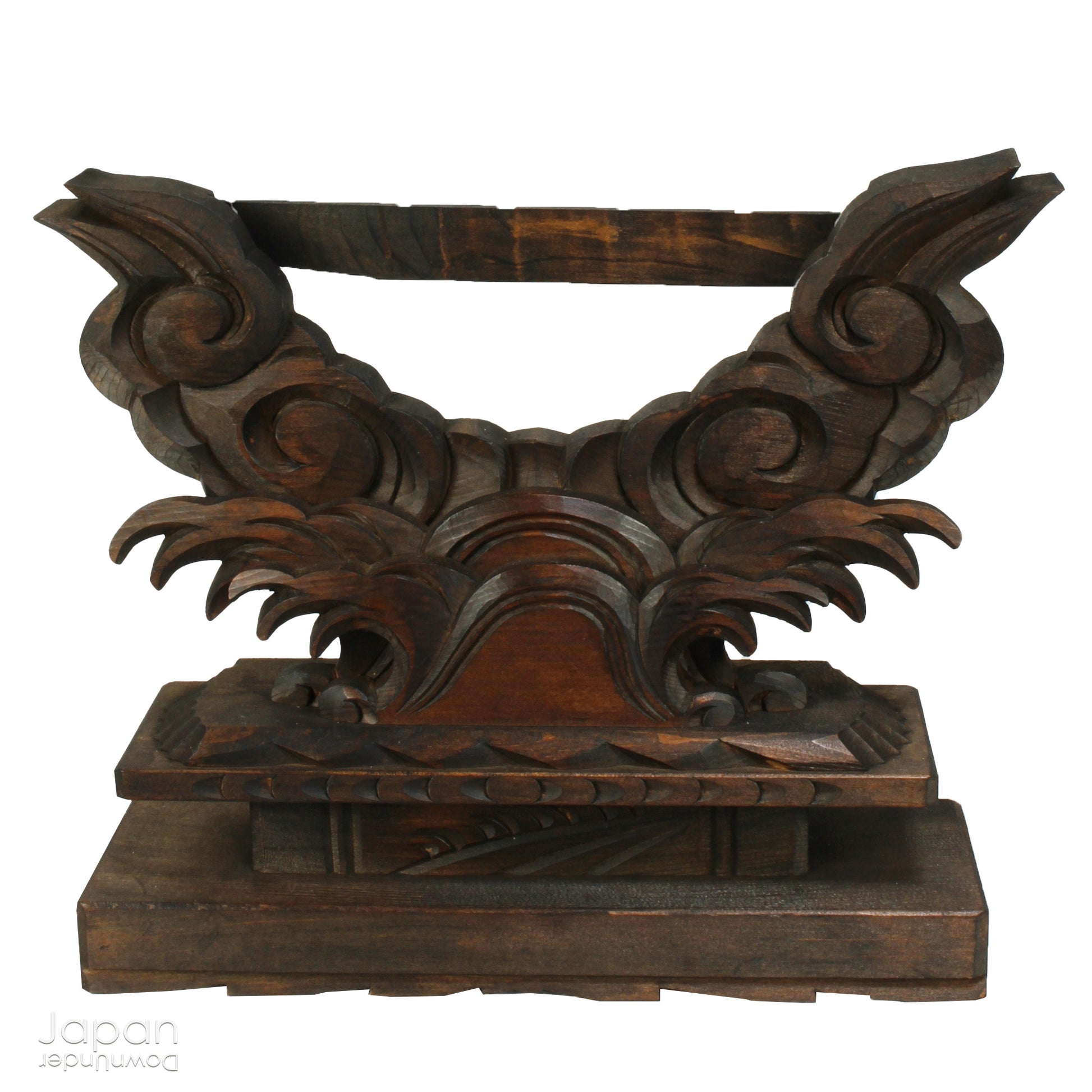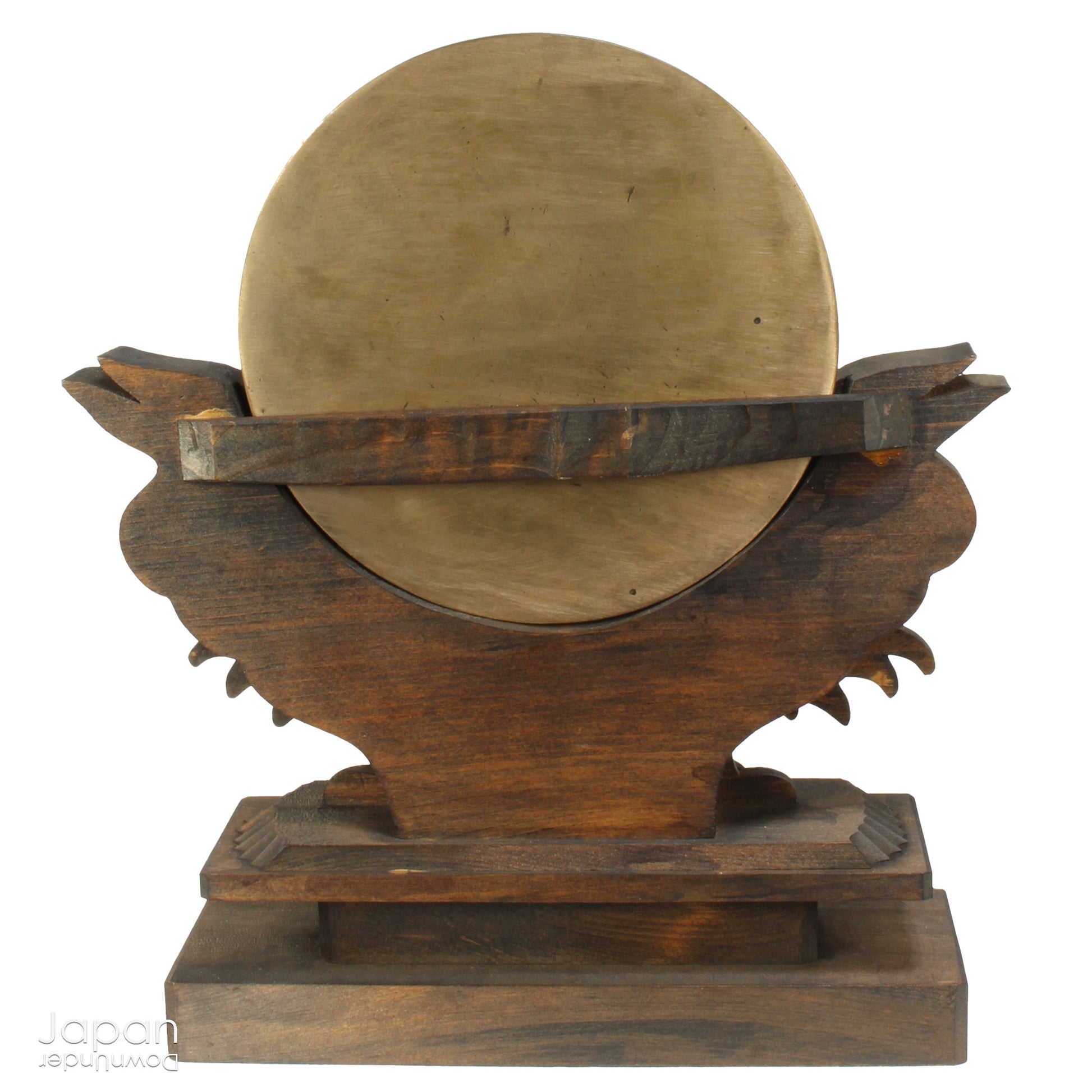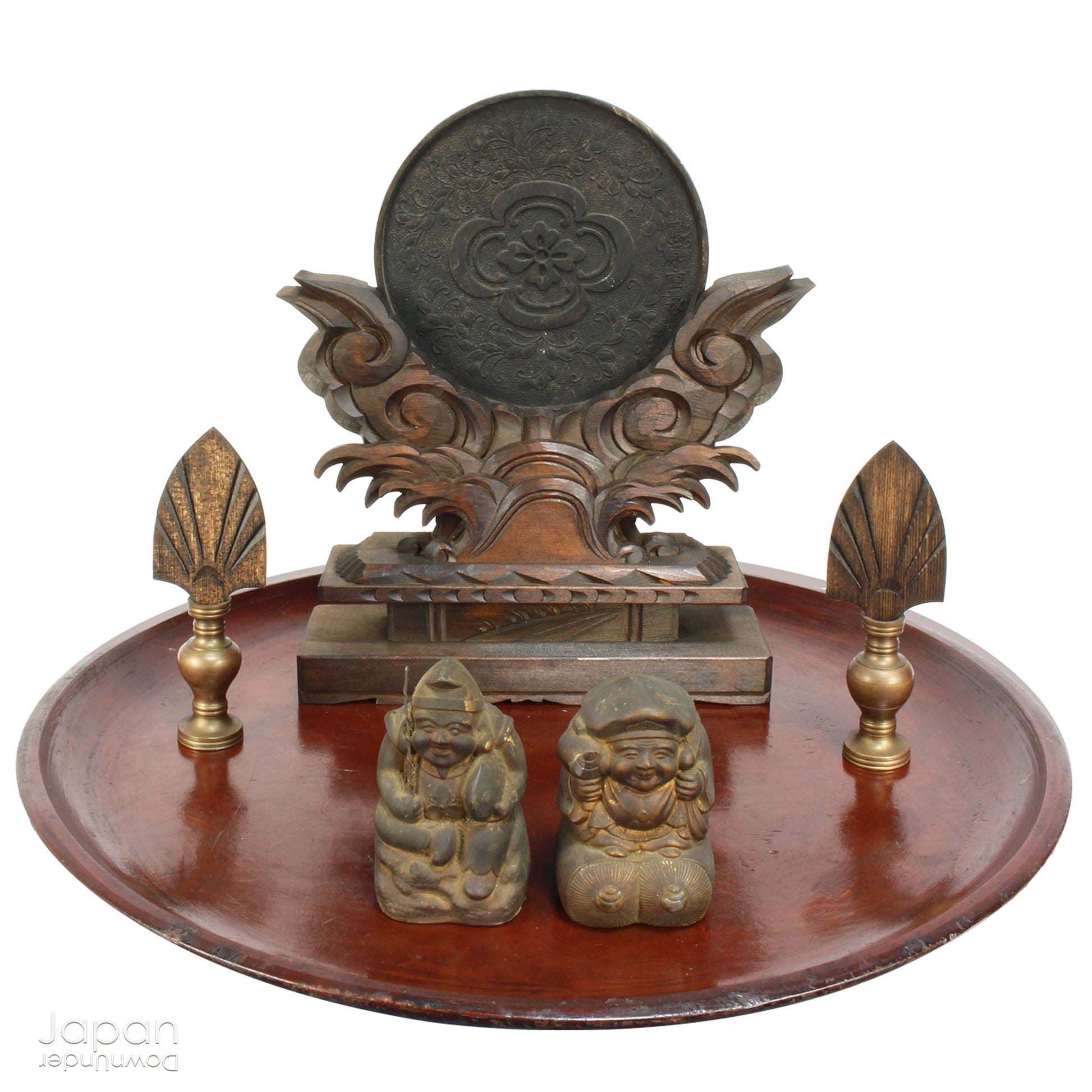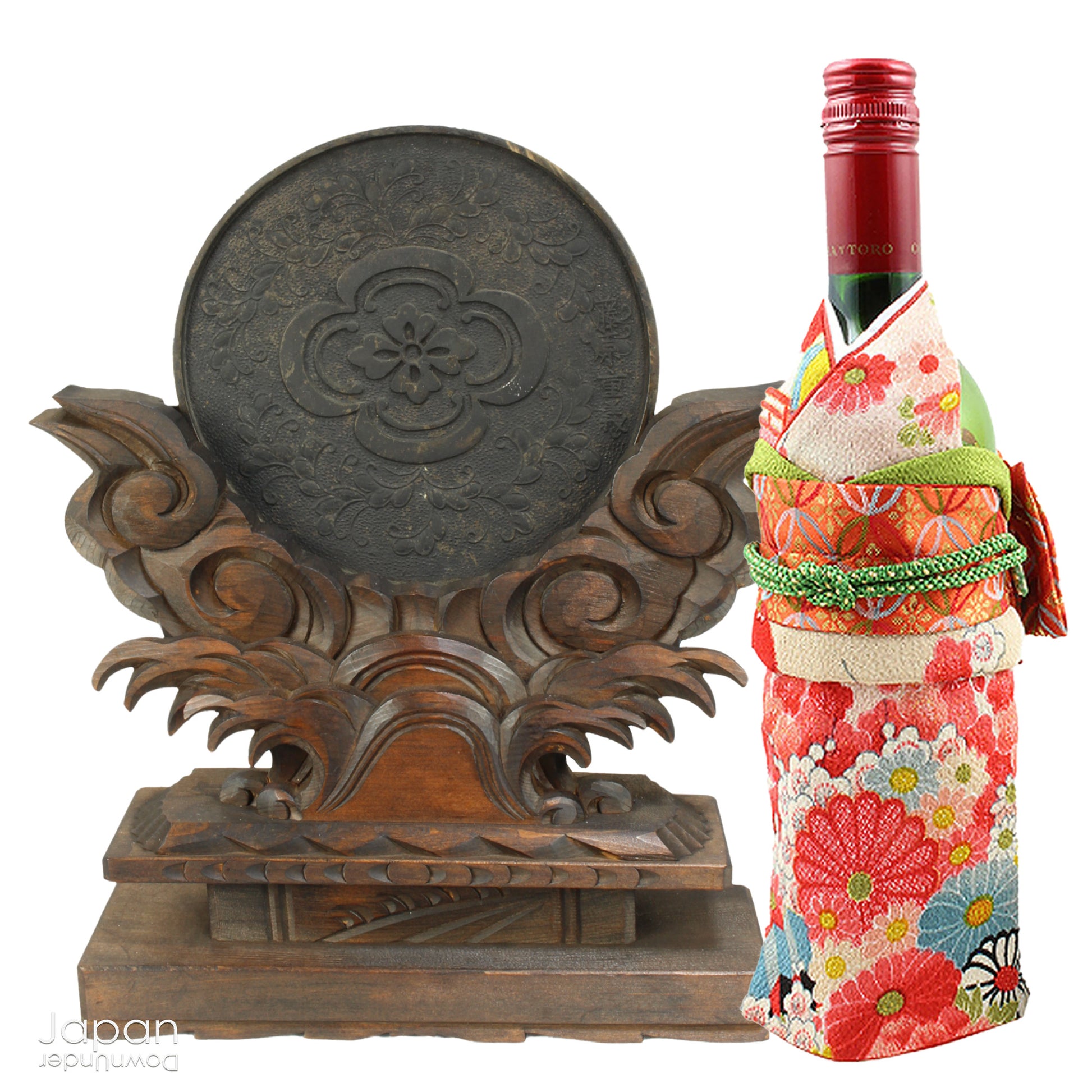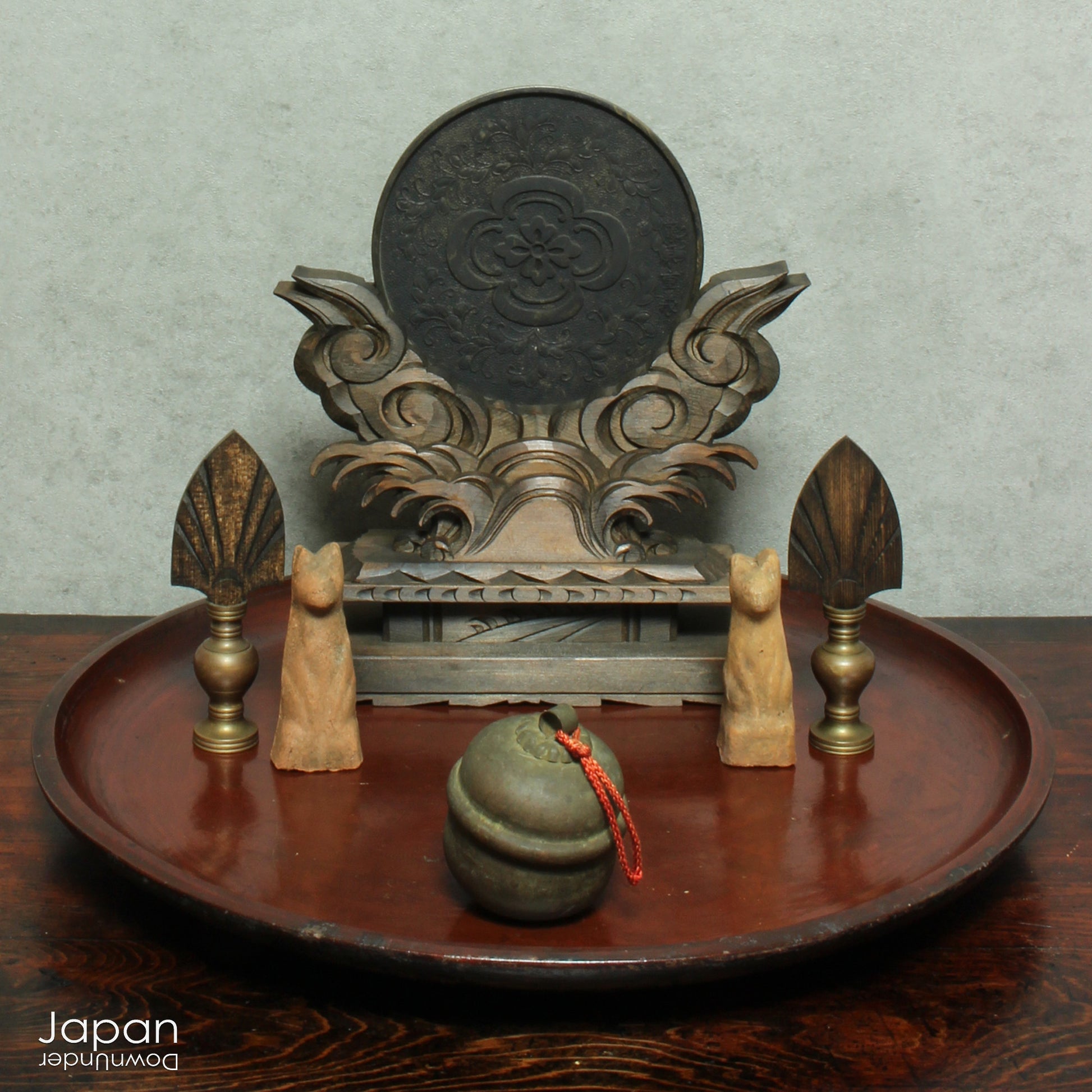JapanDownUnder
japanese antique mirror on ornate carved wood stand - shinto altar decor
japanese antique mirror on ornate carved wood stand - shinto altar decor
Couldn't load pickup availability
Love Japanese Style Like We Do
Bring a sense of serenity and sacred elegance into your space with this Shinto shrine mirror, gracefully presented on an intricately carved wooden stand. Far more than a decorative object, this piece embodies spiritual significance and cultural depth - an ideal addition for those seeking harmony, mindfulness, and a touch of divine presence in their home.
In the Shinto tradition, mirrors are considered sacred vessels, believed to reflect not only the physical world but also the spiritual realm. Deeply connected to the sun goddess Amaterasu, the Shinto mirror is one of Japan’s revered Imperial Regalia (Sanshu no Jingi), symbolizing divine light, purity, and spiritual clarity. These sacred mirrors are traditionally enshrined in the inner sanctuaries of temples and homes as channels to the world of the kami (gods and spirits).
The back of this mirror features the Mokko Mon, one of Japan's ten most widely used family crests. Framed by elegant foliage, this emblem carries a quiet mystery - some believe it represents the Japanese quince flower, while others interpret it as a stylized cucumber or melon. On the front, the mirror’s gently aged brass surface offers a weathered, antique charm, reflecting the passage of time and the beauty of imperfection.
Its wooden base is artfully carved with motifs of clouds and waves. In Shinto belief, clouds signify the presence of the divine and the promise of blessings, while waves symbolize life’s constant motion and spiritual renewal. Together, they create a harmonious foundation for the mirror, uniting earthly elements with the ethereal.
Whether placed in a meditation room, sacred altar, or simply as a centerpiece in your home, this mirror brings more than aesthetic beauty - it invites stillness, reverence, and a profound connection to the unseen.
Well-preserved and in excellent structural condition, both the mirror and its stand promise enduring beauty and meaning, ready to become a cherished spiritual heirloom for years to come.
- mirror and stand measures around 27.5 cm (10.8”) tall x 24 cm (9.4”) across x 6.5 cm (2.3”) deep.
- weighs 650 gm.
(listing for mirror on stand only)
- mirror and stand measures around 27.5 cm (10.8”) tall x 24 cm (9.4”) across x 6.5 cm (2.3”) deep.
- weighs 650 gm.
(listing for mirror on stand only)
SHIPPING INFORMATION
- please read our shipping notes in shipping policy.
- we use recycle packaging wherever possible and wrap for safety, rather than appearance!
ABOUT OUR VINTAGE, ANTIQUE AND OTHER ITEMS
We list pieces we feel are worthy of display. There may be scratches, dents, fading and signs of wear and tear. We try to explain the condition of each item exactly, but may miss something.
Information regarding the item and it’s age is obtained from dealers and our personal research. We do our best to give you the correct information but please be aware that we cannot guarantee this information.
Please message us prior to purchase with any questions you may have about our products.
SHINTO IN BRIEF
Shinto is Japan’s own religion that started with Emperor Gimmu in BC 600s. Shinto is worshipping nature and worshiping ancestors. Everything has a spirit and humans have a good nature. Evil spirits are kept away by praying and giving offerings to the higher level spirits. The most important deity is the Sun-god Amaterasu.
Important values are ritual purity, sincerity, animism (mountains and rivers have spirits, people become spirits, words have spirits), presence (no life after death), the imperial family is sacred, nature should be preserved and worshipped, people with grudges become evil spirits, festivals are important and a must for social harmony and a good harvest.
SHINTO MIRROR (SHINKYO)
The circular mirror of Shinto is a potent symbol. It stands on the altar reresenting the kami (god). It also functions as the ‘spirit-body’ (goshintai) of the kami. It is the object the spirit enters to take physical form. The mirror acts as an interface between the physical and spiritual realms of existence.
Japanese mythology claims that the original ‘spirit-body’ was that of Amaterasu, the Sun Goddess, who gave a circular mirror to her grandson, Ninigi, when he descended to earth. It had been used previously to lure her out of a cave in which she was hiding. Her absence had plunged the world into darkness, and to tempt her out she was told that there was another goddess as beautiful as herself. The mirror was held up so that when she peeked out she was greeted by her own radiance, and the momentary hesitation allowed a rope to be tied across the cave entrance to prevent her from re-entering. Sunlight was restored to the world.
Later when Amaterasu decreed that a mission be sent down to earth from the High Plains of Heaven, her grandson Ninigi-no-mikoto was chosen to lead it. Before he departed, she presented him with the very same mirror which had played such an important part in the rock-cave incident. ‘Take this and revere it as if it were myself,’ she told him. Within the reflecting surface something of her essence had become ingrained.
Ninigi passed the mirror down to his heirs, who formed the imperial line which continues to this day (the present emperor is the 125th). For a long time the mirror was kept in the palace of the king of Yamato, the dominant state in ancient Japan, but in the early centuries of the Common Era it was deposited at Ise Jingu. Since that time it has been kept secluded from human eye, acting as the unseen focus of worship for the millions of pilgrims and worshippers who file before it each year.
CLOUD AND WAVE SYMBOLOGY
In ancient Shinto religion, the world is believed to be inhabited by a myriad kami (gods or spirits). Clouds play a role as dwelling places or vehicles for these deities. In some legends, clouds act as chariots for the gods, indicating their arrival or departure.
The Ainu have as one of their creation myths, the descent of a deity from heaven upon a five-colored cloud:
“the world was created when oil floating in the ocean rose like a flame and became the sky. What was left turned into land. Vapor gathered over the land and a god was created. From the vapor of the sky, another god was created who descended on five-colored clouds. Out of those clouds, the two gods created the sea, soil, minerals, plants, and animals. The two gods married and produced many gods including two shining gods—the Sun god and the Moon god, who rose to Heaven in order to illuminate the fog-covered dark places of the world.”
Clouds are considered to be lucky. For farmers, the symbols were harbingers of rain and thunder. Clouds were happy signs for the imminent rains needed for watering their crops.
Waves represent life, motion, and change. Water purity signifies the cleansing of the spirit. Waves, an indication of the mighty ocean's restlessness, also represent faith, hope, and joy even in the deepest of troubles.
Share
